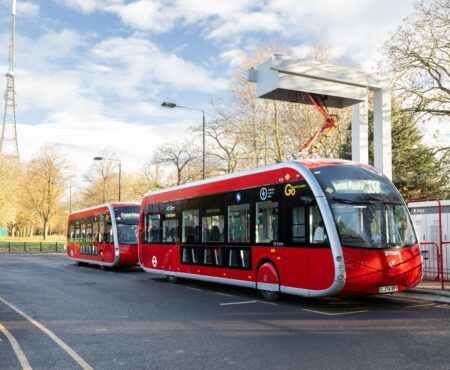National Highways has launched one of the UK’s largest ever purchases of low-carbon hydrogen, in a move that is set to reduce the carbon footprint of the Lower Thames Crossing, accelerate the construction industry’s shift away from diesel, and kick start the highly anticipated development of a hydrogen ecosystem in the Thames Estuary with the potential to grow the economy.
As a part of National Highways’ commitment to Net Zero maintenance and construction emissions by 2040, the proposed Lower Thames Crossing has been designated a pathfinder project to explore carbon neutral construction. The scheme seeks to remove an estimated total of 66 million liters of diesel from its worksites.
The move kick starts the Construction Leadership Council’s government-backed route map to eliminate diesel from most construction sites by 2035, by giving major firms and suppliers the confidence to invest in hydrogen skills and technologies.
National Highways is aiming to buy the supply, storage, and distribution of over six million kilograms of hydrogen to use on the project, which will replace around 20 million liters of diesel. Projects such as the rail sectors HS2 have trialed small hydrogen generators, however the Lower Thames Crossing would be the first in the UK to use the fuel on a large scale to power its major construction vehicles such as excavators and dump trucks.
The Lower Thames Crossing is a proposed new road and tunnel across the river Thames east of London. The detailed examination of the Lower Thames Crossing by the Government’s independent planning experts, the Planning Inspectorate, began on 20 June 2023. If the plans are approved, construction is currently expected to start in 2026.
The project also plans to use electric plant for static or slow-moving machinery, where a mains connection is possible and in smaller equipment where battery solutions are viable. Other renewable fuel sources and biofuels may also be used.
Matt Palmer, executive director, Lower Thames Crossing, said, “The proposed Lower Thames Crossing is designed to be the greenest road ever built in the UK, with the aim of being carbon neutral in construction. At the heart of these plans is the use of clean low-carbon hydrogen power, and by using it on such a large scale to power our heavy construction machinery that is traditionally hard to electrify, we can significantly reduce our carbon footprint, accelerate the construction industry’s shift away from diesel, and help kick start the creation of a hydrogen ecosystem in the Thames Estuary.”
The move would be a step change for the construction industry and builds on the work of the Construction Leadership Council’s CO2nstruct Zero task force, which recently published its government-backed route map to eliminate diesel from most construction sites by 2035.
Traditionally the industry has been reliant on diesel to power heavy machinery which are hard to electrify and not suitable for batteries due to their significant power requirements. By securing the supply of such a high volume of hydrogen, National Highways is giving its supply chain the confidence to invest in the next generation of hydrogen powered machines, as well as develop the new skills required to operate and maintain them. With 45% of the project’s workforce to be recruited from the local area, this will leave a legacy of green skills in the region.
National Highways will work closely with the Department for Transport and the Department for Energy Security and Net Zero to ensure the hydrogen purchased for the proposed Lower Thames Crossing scheme helps to drive decarbonization and strategic development.
Hydrogen hubs are already emerging across the UK, and the certainty and scale of demand created during the construction of the Lower Thames Crossing would accelerate the establishment of a hydrogen ecosystem in the Thames Estuary, which the government sponsored Thames Estuary Growth Board predicts would grow the economy with an added £3.8bn GVA and 9,000 highly skilled jobs by 2035. The Thames Freeport, which is directly adjacent to the proposed tunnelling compound has already been identified as a potential hydrogen supply site.





